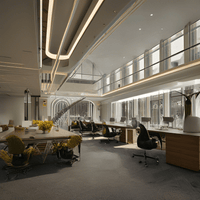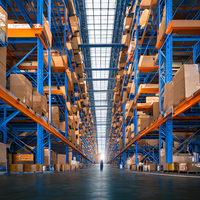An Overview of Maintenance Best Practices for Commercial LED Pendant Lighting Applications
Navigation
Introduction
Commercial spaces require high-quality, efficient illumination to support operations, maximize productivity and provide a safe, comfortable environment for workers and guests alike. The high upfront costs of commercial LED pendant lighting investments demand realizing significant returns through long lifespans and minimal disruption. However, even the most durable LED technology still incurs maintenance demands that must be addressed properly to sustain high performance, code compliance, cost savings and peace of mind over time.
Determine fixture maintenance demands
To realize its full potential, maintenance for commercial LED pendant fixtures must start from installation. Determining the specific components, modules or other parts that will need replacement after a certain number of hours of use helps establish a lifecycle budget and work schedule to proactively replace them before diminished performance or device failure occurs. Most traditional LED modules reach around 60,000 hours of operation before needing replacement, but some commercial fixtures sustain 150,000 hours. Carefully tracking hours allows swapping modules before they degrade noticeably.
Equally important, identify any parts that tend to accumulate dust, grime or dirt over time like lenses, enclosure trims or vents which require cleaning on a routine basis. Dust buildup reduces light output, decreases efficiency, obscures aesthetics and in severe cases may damage the fixture. Establish a regular cycle for wiping down, vacuuming or other targeted cleaning of at-risk parts based on how fast they get dirty in the typical space environment. More frequent cleaning may be needed for fixtures near air vents, entryways or industrial equipment.
Schedule preventative maintenance
As fixtures age, certain components like capacitors can begin to fail over time potentially causing issues with flickering, dimming lighting or complete outage. Though statistically unlikely, establishing a schedule for periodically inspecting all fixtures ensures detection and resolution of any problems before they become safety, efficiency or operational concerns. Troubleshooting or complete replacement may be needed depending on the severity. It also permits adjusting fixture aim or position as needed to maintain optimal coverage and distribution over time.
For intelligent fixtures networked into controls systems, integration and software/protocol updates may periodically become available improving functionality, features and/or interoperability. Failing to implement updates could freeze fixtures in an unstable state or make them incompatible with the system over time. Testing updates on a small subset of fixtures first proves compatibility before widescale deployment to avoid disruption. Regular system checks similarly confirm continued full functionality, proper security, software stability and remote manageability as designed.
Plan ahead for maintenance costs and down time
Preventative maintenance schedules and procedures accomplish little without trained personnel able to properly execute them. Those responsible for cleaning, reaiming, testing components or addressing issues that arise need clear direction on exactly how each should be done to avoid damaging fixtures or compromising illumination quality, coverage and safety.
Well-documented processes, step-by-step checklists, check-off sheets, visual diagrams/images or even instructional videos help ensure consistency and quality results each time maintenance occurs. Establish templates for common/routine care as well as issue diagnosis and resolution workflows. Make materials accessible in the field through mobile apps, printed on weather-resistant paper, or mounted near fixtures/the system layout.
Regular training, especially when there are personnel changes, similarly helps lock in best practices and avoids serendipity determining how lights continue being maintained after initial setup. Hands-on practice under the guidance of experienced staff provides the experiential learning most impactful. Nothing substitutes for properly understanding a system to recognize and resolve problems efficiently without disrupting operations or incurring damage.
Some LED pendant fixture maintenance like basic cleaning or reaiming adjustments may eventually become feasible for general facility staff with adequate training. But replacement of technical components, repairs, feature configuration or advanced troubleshooting should typically remain under the purview of dedicated lighting technicians or an experienced third-party provider until staff achieves and demonstrates a high level of competence. Mistakes could significantly disrupt operations, reduce quality/safety or incur costly damages.
Conclusion
For commercial LED pendant lighting, maintenance consists of more than reacting to issues as they emerge. It proactively establishes the routines, budgets and resources needed to meet foreseeable demands before they incur larger costs or disruption. Effective management optimizes efficiency to minimize short-term spending while preparing for longer-term sustainability. It finds the right balance of preventative care and reaction for the specific fixtures, space needs and operational imperatives.



